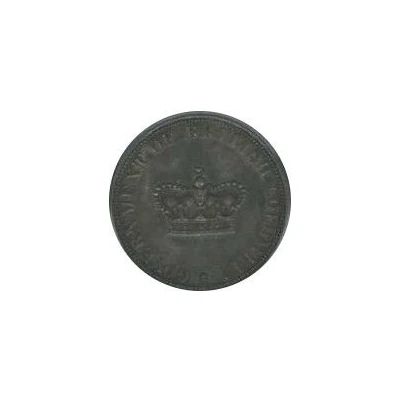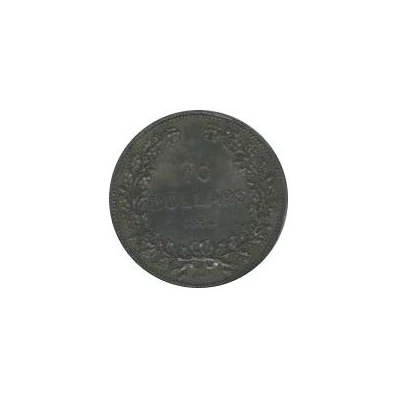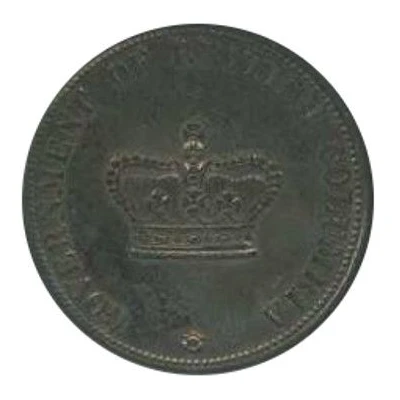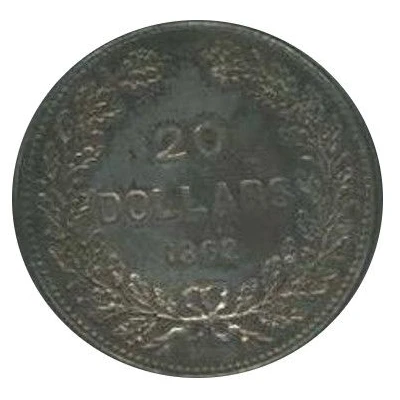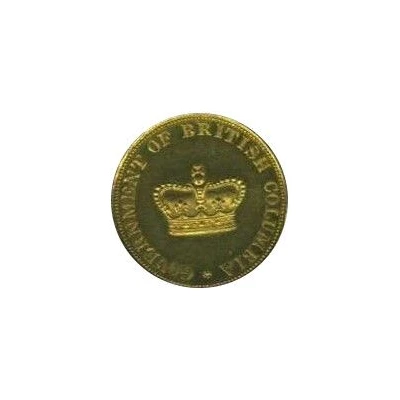
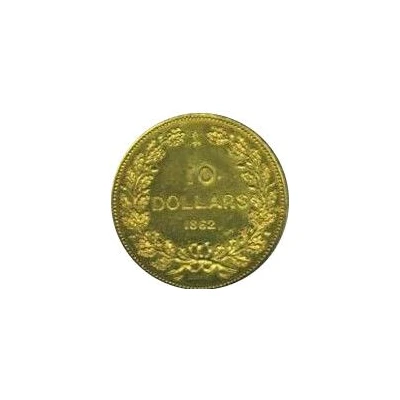

10 Dollars - Gold pattern
1862 year| Gold (.900) | 16.718 g | 27 mm |
| Issuer | British Columbia (Canadian provinces) |
|---|---|
| Type | Pattern |
| Year | 1862 |
| Value | 10 Dollars |
| Composition | Gold (.900) |
| Weight | 16.718 g |
| Diameter | 27 mm |
| Thickness | 2 mm |
| Shape | Round |
| Technique | Milled |
| Orientation | Medal alignment ↑↑ |
| Demonetized | Yes |
| Updated | 2024-10-04 |
| Numista | N#419988 |
|---|---|
| Rarity index | 100% |
Reverse
Denomination atop date in wreath. Initials of engravers underneath.
Script: Latin
Lettering:
10 Dollars
1862
KUNER A.
Engraver: George Albrecht Ferdinand Kuner
Edge
Reeded
Comment
Specimen Gold 10 Dollar pieces. A total of 18 10 dollar pieces were created, with a distribution between two silver, one gold and one gilt variants. These were made due to a gold rush in British Columbia and a need for hard currency as the colony was reliant on primarily American and British Gold coinage. These patterns were made to be sent to the International Exhibition held in London after pressure was applied by BC Treasurer Gosset. The Governor of British Columbia in 1859 had requested for a number of gold, silver and copper coins to be transferred to British Columbia however, only a few silver and copper coins were sent. With the Cariboo Gold Rush under way, he sought to get the right to mint gold in BC from the Monarch in order to meet local needs and decrease dependance on American currency. These patterns were ordered from Mr. Wagner of Vanderslices Silver Manufactory in California who employed Albrecht Kurner to create the dies and then struck the pieces. Five Sets are known to exist and up to 10 may exist. The plan was torpedoed in London (as minting coins, especially gold, was a royal prerogative) and no further coins were minted until confederation with the rest of Canada. The proposed site for a local mint was New Westminster. These coins in gold reportedly had the exact same composition and dimensions as contemporary American Gold pieces (much as the later Canadian pieces would)
Interesting fact
One interesting fact about the Pattern 10 Dollars - Gold pattern 1862 from British Columbia (Canadian provinces) made of Gold (.900) weighing 16.718 g is that it was designed by the Royal Canadian Mint and features a unique blend of traditional Canadian symbols, such as the maple leaf, and elements of British heraldry, such as the crown and the shield. This coin is considered a rare and valuable collector's item, with only a limited number minted, making it a highly sought-after piece among numismatists and collectors of Canadian history.
